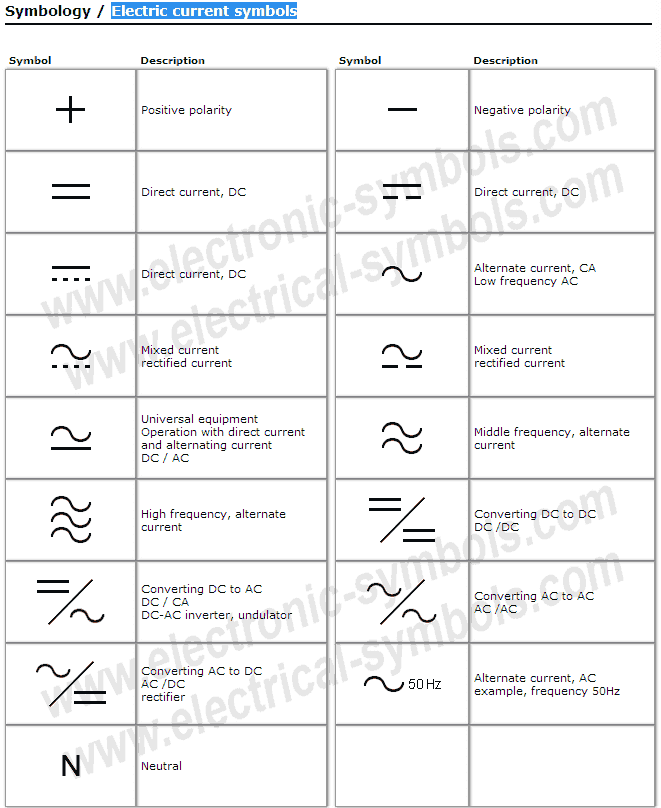AC/DC Symbols: The Shocking Truth You Need to Know
Ever glanced at a power adapter and wondered about those squiggly lines and dashed lines? Those aren't just random doodles. They’re the secret language of electricity, telling you whether you're dealing with alternating current (AC) or direct current (DC). Knowing the difference could save your gadgets—or even you—from a shocking experience. This is your ultimate guide to decoding the cryptic world of AC/DC current symbols.
Imagine plugging your phone charger into a 220V outlet designed for a hairdryer. Sparks might fly—literally. That's why understanding AC and DC symbols is vital. These little markings are like tiny electrical guardians, silently whispering about the type of current flowing through your devices. They’re the unsung heroes of power management, ensuring everything from your laptop to your electric toothbrush gets the right juice.
AC and DC represent two fundamentally different ways electricity flows. Alternating current, as its name suggests, constantly switches direction, like a restless tide. Direct current, on the other hand, flows consistently in one direction, like a steady river. These differences are reflected in their symbols. The AC symbol typically resembles a sine wave, illustrating its oscillating nature. The DC symbol, a straight line with dashes, represents its consistent flow.
These symbols weren't born overnight. They're the product of decades of electrical innovation. Early pioneers of electricity experimented with both AC and DC, leading to a “War of the Currents” in the late 19th century. Ultimately, AC triumphed as the preferred method for power transmission due to its ability to be easily transformed to different voltages. However, DC remains essential for many electronic devices, which is why both symbols are prevalent today.
Understanding these symbols is more than just an academic exercise; it's a practical necessity. Incorrectly connecting a DC device to an AC power source can lead to damage or even fire. Conversely, using an AC adapter with a DC device might not provide enough power, rendering the device useless. The AC/DC symbols act as crucial guides, preventing these mishaps and ensuring your electronics function safely and efficiently.
The AC symbol, a stylized sine wave, signifies the oscillating nature of alternating current. The DC symbol, a straight horizontal line with a series of shorter dashed lines below, depicts the unidirectional flow of direct current. These are the most commonly encountered representations, but variations exist. Sometimes, DC is also represented by a circle with a plus and minus sign, indicating the positive and negative terminals.
Knowing the AC DC voltage symbol protects your equipment and ensures proper function. It allows you to choose the correct power source and avoid potential damage or safety hazards.
One benefit is equipment safety. Using the correct power supply prevents damage from incompatible voltage and current types. Another benefit is optimal performance. Matching the correct AC or DC input ensures the device operates efficiently and as intended. Lastly, these symbols enhance user safety, minimizing the risk of electrical shocks or fire hazards.
Advantages and Disadvantages of Understanding AC/DC Symbols
| Advantages | Disadvantages |
|---|---|
| Prevents equipment damage | Requires basic electrical knowledge |
| Ensures proper device function | Symbol variations can be confusing |
| Enhances safety |
Best practices include checking device specifications for the required current type, verifying the power adapter’s output matches the device's input, and understanding regional voltage differences.
Examples of AC DC symbols can be found on power adapters for laptops, smartphones, and other electronics. They are also found on appliances, battery chargers, and power tools.
FAQs: What is the difference between AC and DC? What does the AC symbol look like? What does the DC symbol look like? Where can I find these symbols? Why is it important to know the difference? What happens if I use the wrong power supply? How can I learn more about electricity? What are the safety precautions for handling electrical devices?
Tips and tricks include using a multimeter to verify the output of a power adapter and consulting online resources for symbol identification.
In conclusion, understanding AC/DC current symbols is essential for anyone who interacts with electronic devices. These seemingly simple markings play a crucial role in ensuring equipment safety, optimal performance, and user well-being. By taking the time to learn the difference between AC and DC symbols, you’re empowering yourself to use electronic devices safely and effectively. This knowledge not only protects your valuable electronics but also contributes to a safer environment for everyone. So, next time you see those squiggly lines and dashes, take a moment to appreciate the silent guardians of your electrical world. They’re more important than you think. Explore more about electrical safety and the fascinating world of current flow – it's electrifying!
Navigating the fit to fat tiktok trend
Decoding benjamin moore smoke the enigmatic neutral
Unmasking reality the enduring impact of picassos obra cubista














